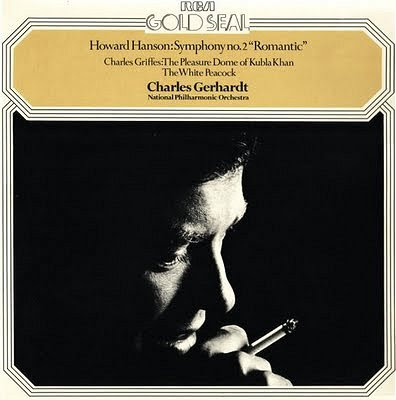
Full marks to the ever innovative
Sequenza21 for bringing
Wiki technology into blogging. Wiki software allows mutiple authors to create and modify documents online. And the smart guys at
Sequenza21 are using it to build a reader created community encyclopeadia of new music. This is exactly what
Tim Berners-Lee created the world wide web for - sharing information between multiple users. The online
Wiki encyclopaedia has very successfully pioneered the development of free-content resources on the internet. It is fantastic to see
Sequenza21 right in there using this innovative platform. Collabarative working is not without its hazards though. Last weeks
a pioneering 'Wikitorial' about Iraq, and written by readers, was pulled at the LA Times due to online vandalism. But the music bloggers are a much better behaved bunch than the political activists, and I fully expect
Sequenza21's Wiki project to be hugely successful, and followed by many others.
It is worth reflecting that collabarative working is not a new phenomena in music
. Four days after Rossini died in 1868 Verdi proposed a requiem mass for the deceased composer, with each

individual movement to be composed by a different leading Italian composer of the time. Twelve of the composers who contributed to the ultimate cut and paste job are in the category of forgotten masters (Buzzolla, Bazzini, Pedrotti, Cagnoni, F. Ricci, Nini, Boucheron, Coccia, Gaspari, Platania, L. Rossi and Mabellini), but the thirteenth was Verdi himself. His
Libera me was later recycled and incorporated into his own famous
Requiem for novelist and poet Alessandro Manzoni.
In typically Italian version the planned performance of the 'Wiki'
Messa per Rossini never happened. The extraordinary patchwork lay forgotten until a belated first performance 120 years later, in Parma, in 1988. It was then taken up by choral specialist Helmut Rilling who performed it at his Oregon Bach Festival. He then went on to record it with the Radio-Sinfonierorchester Stuttgart, and
that two CD set, which is still in the catalogue, plays as I type this post. (Musically it probably falls into the category of a justly neglected masterpiece).
Of course the
Messa per Rossini wasn't a true Wiki work as the composers of the individual

movements were identified. Much closer to the Wiki model was the equally fascinating
Mont Juic Suite for orchestra. In the 1930's, Benjamin Britten attended a music festival in Barcelona with Lennox Berkeley. He was fascinated by the themes played by the musicians and jotted them down on a scrap of paper. Later Berkeley and Brittem took these scraps, and in true Wiki fashion composed the
Mont Juic Suite (Berkeley's Op. 9 and Britten's Op. 12) without identifying the authorship of each of the four movements. But on the liner note of my vinyl
Lyrita recording Peter Dickinson says that Berkeley told him Britten wrote the last two movements. So today even the
Mont Juic Suite can't claim to be a true Wiki composition.
Let's stay with the collabarative thread. Can anyone add to this post other truly Wiki musical works written by more than one composer, where the authorship of individual movements (or sections) has never been revealed? (Only works by two or more
living composers qualify as a Wiki. Cerha's orchestration of the last Act of Berg's
Lulu, Sussmayr's completion of Mozart's
Requiem, Deryk Cooke's realisation of Mahler 10, or, heavens forbid, Anthony Payne's reconstruction - deconstruction? -
of the sketches of Elgar's 3rd Symphony don't count as Wiki works I'm afraid).
If you enjoyed this post take the overgrown path to A direct line to Britten. 








Comments
1941 April Double Music (with John Cage) for 4 percussionists playing buffalo bells, brake drums, 2 sistra, sleigh bells, thundersheet, temple gongs, tam-tam, cowbells, water gong; Publisher: Peters; Recording: Mainstream Stereo MS-5011 (LP) Manhattan Percussion Ens. cond. Paul Price; Time 58000; New World Records NW 330
But caution here. You may wind up wasting many hours at this site! You have been warned.
Is that Wiki cooperation as you mean it?
They surely are all living; are they "composers" in our classical-oriented sense?
Moreover, is each single contribution recognizable? I dont'know, since obviously they were working at different times, but Glass (according to some brief information I had a glance at) had to say he imagined to write the score in the seventies, thus intending his composing work to be fictionally joint to the other composers's one, at least Brian Eno's.
Maybe you and your guests will find this matter worth some considerations, maybe not...
Ms Artman's text has Old Testament, Holocaust, and modern Middle East conflict overtones (with stylist shades of Gertrude Stein, at times). I believe that the three prime composers alternated composing the multiple movements. In the Berlin (or New York) studio, DJ Spooky then reprocessed parts of some of the
movments into brief interludes and postludes, which, to my mind, are some of the strongest parts of the project. (It is available on Teldec New Line.)
Since you wrote on oratorio, Galen, why don't you listen to the "Lost Objects" oratorio and give the new music community your review of it?